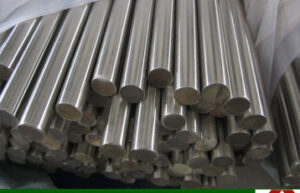Introduction
In the realm of metallurgy, structural transformations weave a tapestry of properties that determine a material’s behavior and performance. The martensitic structure stands as an enigmatic sentinel, wielding its influence over the mechanical strength, hardness, and resilience of materials. Enter the world of 410 stainless steel, where the martensitic structure reigns supreme, shaping its character and capabilities. In this captivating journey, we delve into the intricate realm of the martensitic structure’s role in 410 stainless steel, uncovering its formation, effects on properties, heat treatment, and its profound impact on applications across industries.
1. Unveiling the Martensitic Mystery: The Essence of Structural Transformation
The martensitic structure unfolds as a metamorphic phenomenon, heralding a cascade of changes in material properties.
2. 410 Stainless Steel‘s Composition and the Call of Martensite
 410 stainless steel’s composition beckons martensitic transformation:
410 stainless steel’s composition beckons martensitic transformation:
- Chromium (Cr): 11.5% – 13.5%
- Carbon (C): 0.08% – 0.15%
These components lay the foundation for martensitic evolution.
3. Transformative Metamorphosis: The Birth of Martensitic Structure
Martensitic transformation’s genesis:
- Quenching: Rapid cooling triggers the conversion from austenitic to martensitic structure.
- Lattice Distortion: Carbon’s role in distorting the crystal lattice during the transformation.
4. Strength and Resilience: Martensitic Structure’s Mechanical Marvels
Martensitic structure and mechanical prowess:
- Increased Strength: Martensite’s arrangement imparts higher strength.
- Toughness and Ductility: Achieving balance between strength and toughness.
5. Embracing the Hardness: Martensite’s Role in Wear Resistance
Martensite’s hardness leads to wear resistance:
- Hardness Enhancement: Carbon’s distortion of the lattice boosts hardness.
- Wear and Abrasion Resistance: Martensite’s role in resisting surface damage.
6. The Tempering Tale: Heat Treatment and Martensitic Evolution
Heat treatment’s transformative influence on martensitic structure:
- Tempering: Controlled heating and cooling balance hardness and toughness.
- Carbide Precipitation: Enhanced properties through tempering.
7. Unleashing the Martensitic Arsenal: Applications Across Industries
Martensitic structure’s diverse applications:
- Cutlery: Crafting durable and sharp blades.
- Automotive Components: Springs, fasteners, and engine parts.
- Medical Instruments: Instruments requiring precision and hardness.
8. Crafting Complexity: Martensitic Stainless Steels Beyond 410
 Martensitic stainless steels’ broader landscape:
Martensitic stainless steels’ broader landscape:
- Duplex Stainless Steels: Blending martensite with austenite for enhanced properties.
- Supermartensitic Stainless Steels: High-strength alternatives with corrosion resistance.
9. Innovations on the Horizon: Martensitic Materials of Tomorrow
Innovations redefine martensitic possibilities:
- Nanostructured Martensites: Enhanced strength and performance at smaller scales.
- Additive Manufacturing: Creating complex martensitic geometries with precision.
10. Expert Perspectives: Metallurgists’ Insights on Martensite
Metallurgists delve into the martensitic world:
- Optimizing Transformation: Balancing heat treatment for desired properties.
- Design Challenges: Harnessing martensitic attributes for tailored applications.
11. Fusing Science and Artistry: Designing with Martensitic Attributes
Designers embrace martensitic potential:
- Sculptural Elements: Creating art pieces with martensitic strength.
- Architectural Innovations: Designing structures with enhanced performance.
